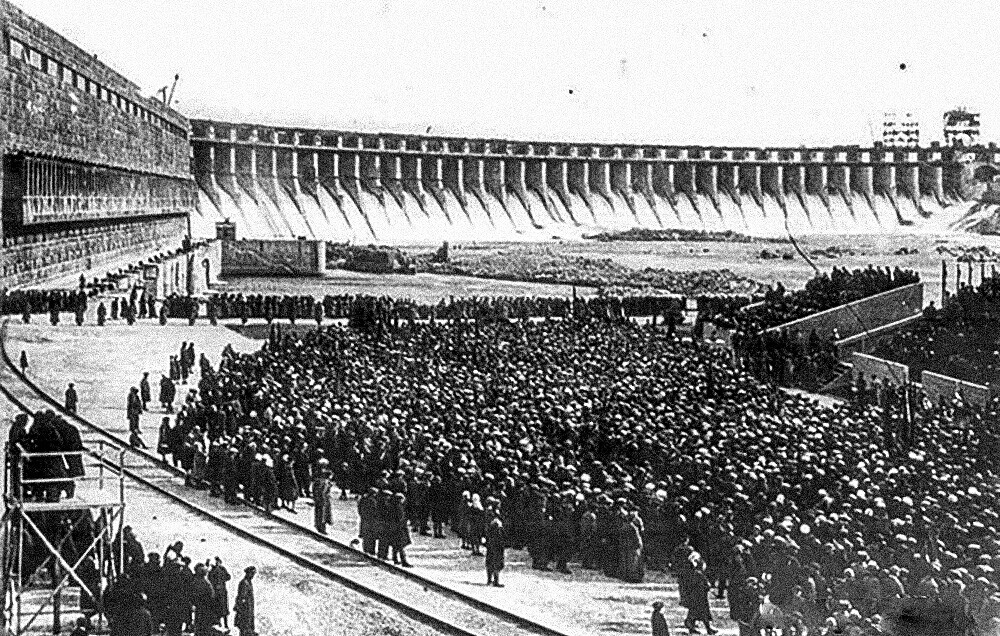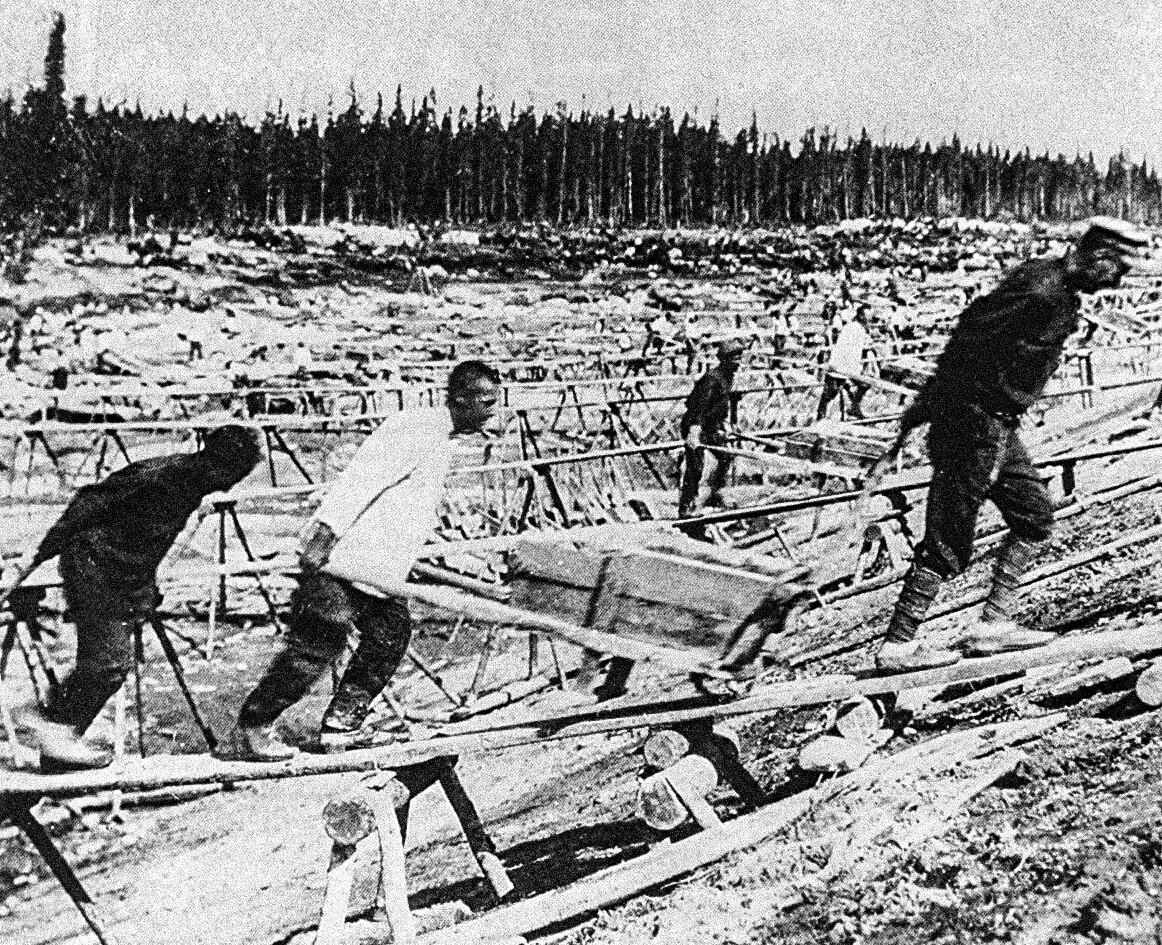The Civil War and the turbulent 1920s, when the Soviet authorities were being established around the country, were now far behind. The new regime began “creating” new people, who were strong, athletic and hard working.
One of the most important goals was to develop sports. Massive physical culture parades were established on the Red Square…
A huge number of people were involved, while Joseph Stalin and the country’s leadership attended, watching from the Lenin mausoleum tribune.
Everyone was forced to do exercises on a daily basis to stay healthy and to be able to study and work - to serve society, in other words.
And the propaganda actively created the image of a healthy Soviet citizen, due countless posters and, of course, photography.
Moreover, all Soviet citizens had to be ready to defend the Motherland - so there were obligatory military (and political) studies for everyone.
Below is a field kitchen of the Red army in operation.
And these “new” Soviet people were also now raised from childhood, so Soviet kids became pioneers and visited pioneer summer camps.
The pioneers had actually lots of fun in the camps…
Stalin’s close fellows: Kliment Voroshilov and Lazar Kaganovich clapping during a youth organization Komsomol conference.
Stalin and Voroshilov meet Soviet sailors.
The authorities started to rebuild the capital city of Moscow. Pictured below is the tarmacking of a Moscow street.
Later in the 1930s, many of the iconic Moscow churches and monasteries would be demolished. The official reason was to create more free space for wider roads, but, in reality, it was an anti-religious campaign. Pictured below is the Strastnoy monastery, demolished in 1937.
Teatralnaya Square in front of the Bolshoi Theater (which is out of shot to the bottom).
In 1932, the country’s most ambitious project - the Moscow Metro - began being constructed.
Soon, Myasnitskaya Street (pictured below) would be renamed into ‘Kirova’ Street (the historical title has since been reinstated)
A tram on Arbat Street (which stopped operating in 1974)
In 1932, the first Soviet “five-year plan” was fulfilled, even ahead of schedule. It required the rapid development of economic goals, first of all, in industries. Read more here. Pictured below are cars in the yard of the GAZ automobile plant.
The Soviets started building giant hydroelectric stations and megafactories, as well as mining and producing lots of items from a variety of spheres. Pictured below is the opening of the Dnieper Hydroelectric Station.

Stalin began forcing the creation of the “kolkhoz” system of collective farming, changing the whole face of Russian agriculture and peasant life.
This policy caused hunger, poverty and many deaths. Read more here.
Sometimes, peasants tried to hide grains and bread, in order not to have to give it to the authorities. But, this was brutally punished. Pictured below is the secret police officers extract grain hidden by peasants.
The OGPU secret police were to be the defenders of the new revolutionary ideas and communist ideology, but turned out just to be executioners.
Watermelons of the Krasnodar Territory being sorted and transported.
In the 1930s-1950s, millions of people in the USSR were caught up in the turmoil of political reprisals and often deported from their birthplaces to remote and barely inhabitable parts of the country. Read more about this here. Pictured below are barracks for settlers in the Urals.
In the early 1930s, the White Sea - Baltic canal was built by the Gulag prisoners in record time.

The 15th century Kalyazin monastery in the background in the photo below was later submerged by the Uglich Water Reservoir, formed by the Uglich Hydroelectric Station dam.
Despite this time being dark on the one hand, on the other, it was a time of dreams and hopes for new life. And many felt happy and people from lower classes finally got a chance to become whatever they wanted.
The Bolsheviks managed to do an impossible thing: to eliminate illiteracy at a rapid pace. In the 1930s, up to 40 million could now read and write.
Former tsarist and noble estates in Crimea were turned into sanatoriums and resorts, where many workers went for summer vacation.
Workers sunbathing in the nude in Crimea.
A family at their dacha in Leningrad Region.
People taking a rest in Moscow’s Gorky Park.
If using any of Russia Beyond's content, partly or in full, always provide an active hyperlink to the original material.
Subscribe
to our newsletter!
Get the week's best stories straight to your inbox